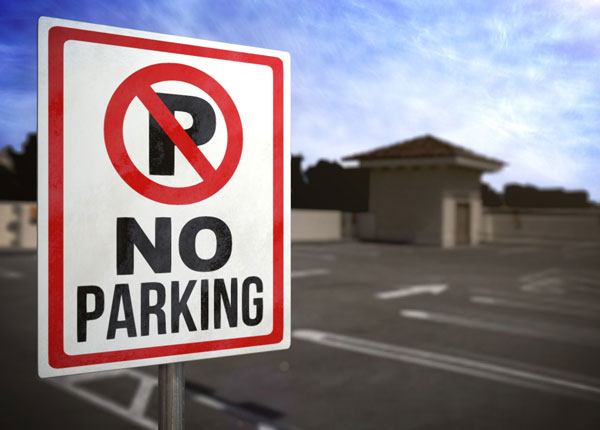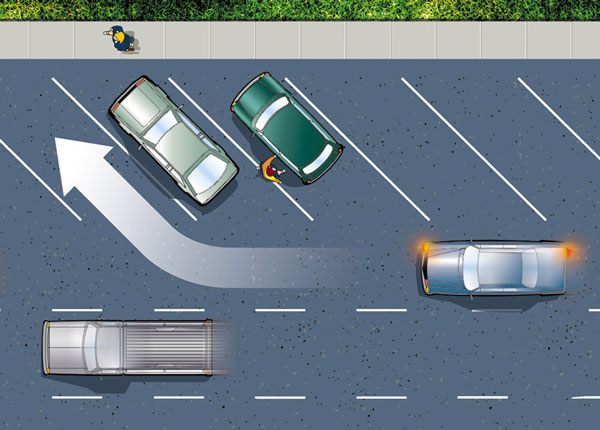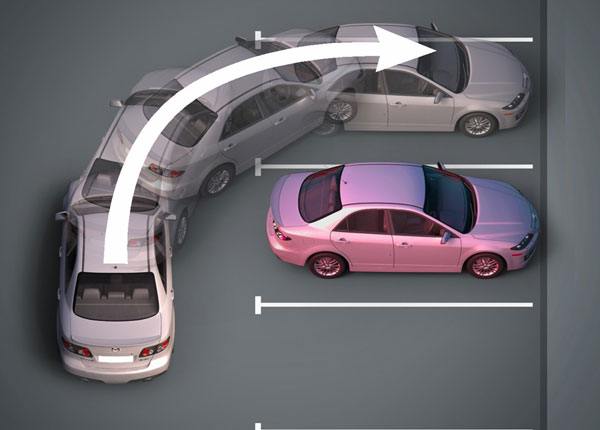
Parking Like A Pro: Angle Parking, Parallel Parking and Parking on Hills
Updated Nov. 20, 2020United States law typically defines parking as “the stopping or standing of a vehicle whether occupied or not, otherwise than when temporarily and actually engaged in loading and unloading merchandise or passengers”. So, the law recognizes a difference between parking your car and temporarily stopping to pick up or drop off. However, where parking restrictions apply, both activities are often prohibited. We will discuss this a little more, further down.
Parking legally and safely is a battle for many novice drivers. Your first hurdle will be choosing an appropriate spot – which is not as easy as you think! Then, you must consider whether your vehicle can fit in that spot and whether you have the necessary parking skills to execute the maneuver. When learning to drive, you must learn how to angle park, perpendicular park and parallel park. The latter of these three techniques – along with parking on a hill – is almost guaranteed to come up during your practical driving exam.
Here, we briefly cover all the parking basics you must know before sitting the driving test. When you are ready to delve a little deeper into parking rules and maneuvers, check out our in-depth information pages which appear later in the course.
Choosing a parking spot
Even experienced drivers make mistakes when choosing a place to park. When selecting a parking spot, ask yourself the following questions:
- Is it legal to park here?
- Is it safe to park here?
- Will my vehicle fit in this space?
- Will I block other traffic by parking here?
Novice drivers must also ask themselves: “Do I have the necessary skills to park here?” It is best not to attempt parking maneuvers on public roads and in busy parking lots, until you have practiced that maneuver extensively in a quiet or empty lot.
In some situations, choosing an appropriate parking spot is easy. For example, store parking lots with clearly marked-out parking bays make it obvious where drivers can and cannot leave their vehicles. Other situations present more of a challenge. In busy metropolitan areas, you must take your cue from road signs, road markings and prior knowledge of general parking restrictions.
Parking restrictions and no parking zones
First and most obviously, you should never park in an area marked with a “NO PARKING” sign. It is not always clear which specific stretches of pavement “NO PARKING” signs refer to, but you can learn how to interpret them correctly by reading through our in-depth parking rules page.
General parking restrictions are also covered on that section of the course. These are the rules which apply pretty much universally across the United States. For instance, you may not park on intersections, bridges, tunnels, blocking emergency service vehicles or in front of driveways. Keep in mind that local state or city-specific restrictions may apply to your area; make sure you check out this information in your state’s driving handbook. “Sorry officer, I didn’t know the rules” doesn’t usually fly with traffic cops.
Perpendicular parking
When perpendicular parking, you will position your vehicle at a 90-degree angle relative to the flow of traffic, or the lanes in a parking lot. You will encounter these parking spaces marked-out in parking lots and multi-story car parks more often than you will on the street. Perpendicular spaces can be entered head-on or in reverse. New drivers should master the head-on approach before attempting to back in, as reversing your vehicle is always more challenging than driving forward.
Angle parking
Angle parking spaces are marked with lines on the pavement, just as perpendicular spaces generally are. Though with angle spaces, your vehicle will be positioned at roughly a 45-degree angle relative to the flow of traffic. You will most commonly find these spaces in streets and open parking lots. Angled parking spaces are designed to be entered head-on, in one smooth and easy maneuver. Never attempt to reverse in to an angle parking spot.
Parallel parking
The idea of parallel parking unsettles new and experienced drivers alike! This type of parking is almost exclusively used along urban streets. Parallel parking is more difficult than angle parking and perpendicular parking, though it is a skill you must learn prior to the practical driving test. Fortunately, it is not as challenging as most drivers believe. Once you can use car reference points effectively and know which way you should be turning the wheel, parallel parking becomes a breeze.
Always practice this maneuver in an empty or quiet parking lot by marking out a space with cones or flags, before attempting to parallel park between two actual vehicles. Our step-by-step instructions and detailed diagrams will have you parallel parking like a pro before you know it.
Parking on a hill
It is very likely that you will be asked about parking on a hill during the learner’s permit test. Hill parking seems complicated, but it is remarkably straightforward once you know how to decide which direction your wheels should face. Our hill parking section covers parking uphill, downhill and what you should do if the road has no curb. This is essential information, as correctly positioning your car on a hill can save lives if your parking brake fails.
Parking risks
Attempting to park becomes dangerous if you fail to think ahead or allow yourself to get stressed out by other drivers. This is more often an issue on crowded metropolitan streets where everybody is competing for the most convenient space, though it can also be a problem in busy parking lots. Frustrated drivers can exhibit road rage and disregard road rules if they come into conflict with another motorist over a parking space. Our article on parking risks discusses the hazards you must look out for when parking in busy areas, how to avoid aggressive drivers and why you should begin looking for a space before you reach your destination.
Our detailed parking articles contain useful images, tips and step-by-step instructions. Why not print these pages so you have the information to hand next time you attempt a difficult parking maneuver?




